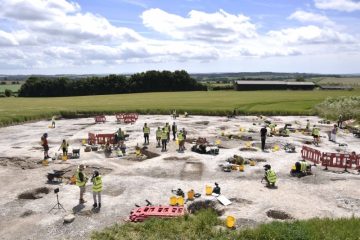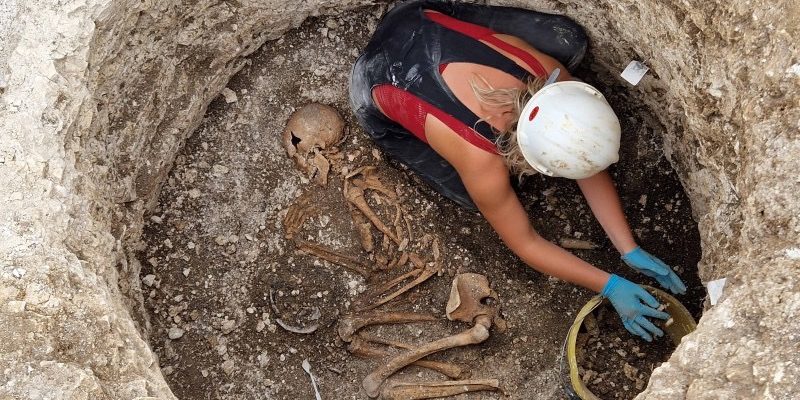Bournemouth University archaeology students team up with geneticists from Trinity College Dublin to solve the structure of British Iron Age society.
DNA analysis from a site in Kingston, Dorset indicates that the line could be traced back to a single woman.
This evidence points to communities being centred around the mothers of families.
It marks the first time evidence of matrilineal communities has been documented in ancient European prehistory.
Professor Miles Russell said: “This caused romans to view Britons as backwards and the ultimate barbarians.”
The finds were Roman style artifacts showing a blend between Roman and traditional iron age customs.
“Land passed down through female line”
Dr Lara Cassidy, Assistant Professor in Trinity’s Department of Genetics, said: “This was the cemetery of a large kin group.
“We reconstructed a family tree with many different branches and found most members traced their maternal lineage back to a single woman, who would have lived centuries before. In contrast, relationships through the father’s line were almost absent.
“This tells us that husbands moved to join their wives’ communities upon marriage, with land potentially passed down through the female line.
“This is the first time this type of system has been documented in European prehistory, and it predicts female social and political empowerment.
“It’s relatively rare in modern societies, but this might not always have been the case.”

“Women occupying positions of power”
Dr Miles Russell, Principle Academic in Archaeology at Bournemouth University and the Excavations Director said:
“Beyond archaeology, knowledge of Iron Age Britain has come primarily from the Greek and Roman writers, but they are not always considered the most trustworthy.
“That said, their commentary on British women is remarkable in light of these findings.
“When the Romans arrived, they were astonished to find women occupying positions of power.
“Two of the earliest recorded rulers were queens – Boudica and Cartimandua – who commanded armies.
“It’s been suggested that the Romans exaggerated the liberties of British women to paint a picture of an untamed society. But archaeology, and now genetics, implies women were influential in many spheres of Iron Age life.
“Indeed, it is possible that maternal ancestry was the primary shaper of group identities.”
Anthropologist Dr Martin Smith, one of the project’s bone specialists from Bournemouth University, added: “These results give us a whole new way of looking at the burials we are uncovering with our students.
“Rather than simply seeing a set of skeletons, hidden aspects of these people’s lives and identities come into view as mothers, husbands, daughters and so on.”


 New exercise group set up for people living with Parkinson’s
New exercise group set up for people living with Parkinson’s